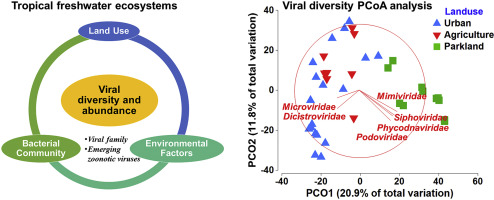
Authors
Documenting the patterns of biological diversity on Earth has always been a central challenge in macroecology and biogeography. However, for the diverse group of freshwater plants, such research program is still in its infancy. Here, we examined global variation in taxonomic, functional and phylogenetic beta diversity patterns of lake macrophytes using regional data from six continents. A data set of ca. 480 lake macrophyte community observations, together with climatic, geographical and environmental variables, was compiled across 16 regions worldwide. We (a) built the very first phylogeny comprising most freshwater plant lineages; (b) exploited a wide array of functional traits that are important to macrophyte autoecology or that relate to lake ecosystem functioning; (c) assessed if different large-scale beta diversity patterns show a clear latitudinal gradient from the equator to the poles using null models; and (d) employed evolutionary and regression models to first identify the degree to which the studied functional traits show a phylogenetic signal, and then to estimate community-environment relationships at multiple spatial scales. Our results supported the notion that ecological niches evolved independently of phylogeny in macrophyte lineages worldwide. We also showed that taxonomic and phylogenetic beta diversity followed the typical global trend with higher diversity in the tropics. In addition, we were able to confirm that species, multi-trait and lineage compositions were first and foremost structured by climatic conditions at relatively broad spatial scales. Perhaps more importantly, we showed that large-scale processes along latitudinal and elevational gradients have left a strong footprint in the current diversity patterns and community-environment relationships in lake macrophytes. Overall, our results stress the need for an integrative approach to macroecology, biogeography and conservation biology, combining multiple diversity facets at different spatial scales.









